Through this project I have done a lot of research, testing, planning and developing for this unit as well as watching documentaries to get inspiration.
My strengths throughout this documentary would be my research into being a DOP. Rather than googling "how to be a DOP" I went further and contacted actual DOP's who're in the industry and asked them what I needed to know, I got in contact with around 6 DOP's asking each different questions and then went online to find Masterclasses as well as YouTube videos from independent filmmakers who weren't DOP's but still shot documentaries and helped me to learn the importance of capturing as much B-Roll as you can so you can tell the story. Lee Thomas and Sam Creamer helped by explaining that the choice of camera needs to be one that you're confident and comfortable operating. If not, it'll show in the footage. As well as this I learnt that every DOP has a different opinion on lighting an interview. Rollo says it can only be done with a 3 point lighting set up, George says you can do it as three point or just with one light, it all depends on the location and the setting of the story and Jon says there's not one way to do it. So from this I chose to go off what best benefitted the documentary both visually and budget. Another strength was the amount of testing I did for the choice of camera, I wanted to be as detailed as possible with my choice and wanted to be sure that the camera was the best choice for the documentary and for me to operate. In my testing I tested the cameras in low light, natural and added light, I also looked into how the camera would be in different looks through the camera (c-log, etc) and handheld movement as well as making sure audio could be recorded through the camera. With my script breakdowns and shot lists, whenever a new script was given to me I wrote up a new breakdown and updated my shot list. I made it as detailed but as simple as possible as well as colour coding certain parts such as the time lapse and photo montage for the titles.
I feel my weaknesses for this unit would be my time management, I could have gotten my work done sooner and to more detail if I had managed my time better. As well, I feel my communication with Jemma and Victoria could have been better as there was a point where me and Jemma both had different ideas for the visuals of the documentary which we had to sort out by sitting together and talking through the visuals and what worked better for the documentary.
If I could improve something with this project, it would be to do more reviews on documentaries as I feel I could have done more to get more inspiration for this project, although I feel I did detailed work with what I'd already researched, you can always do more. I would also manage my time better with getting work completed and improve my communication with my team, although this can be done when we go forward into Production.
"I think it's good to have pressure on yourself. The worst crime is to get kind of complacent" - Edgar Wright
Tuesday, 11 December 2018
Monday, 10 December 2018
PRE-PRODUCTION - DIRECTOR OF PHOTOGRAPHY STATEMENT
For our documentary Re-Werked, my role is the Director of Photography. For the last few months I have been researching, planning and developing the visuals for this documentary, working off the scripts and information passed over to me by Jemma Cotterell (Director & Writer) and Victoria Simmonds (Producer & Writer). Through this statement I will be explaining my visual plan for this documentary, as well as explaining why I've made these choices, referring back to my research and inspiration.
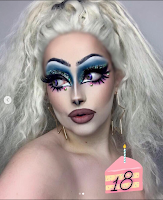 Re- Werked is the story about Tanya Hale, an 18 year old, Non-Binary Art Student who lives in Bodmin (Cornwall). Tanya identifies as Non-binary, until in Drag and then becomes Miss Zodi. Tanya has a huge following on Instagram (Over 10K Followers) and through the documentary we intend to learn how someone like Tanya, who lives in a small town in Cornwall, goes to become a talented Drag Queen with a huge following. But we're also looking into whether people will accept this new form of Drag. Tanya will be traveling over to Margate, Kent. Where Miss Zodi will perform at the Tom Thumb Theatre in front of an audience, along with two traditional Drag Queens, Oliver Lewis and Sapphire Stonee. While also performing infront of Amy Redmond, a woman who's involved in the Drag scene. The documentary will follow an 18 year old art student leaving their small town and traveling across to perform alongside 2 other queens and we'll see what they and the audience think of this new form of Drag.
Re- Werked is the story about Tanya Hale, an 18 year old, Non-Binary Art Student who lives in Bodmin (Cornwall). Tanya identifies as Non-binary, until in Drag and then becomes Miss Zodi. Tanya has a huge following on Instagram (Over 10K Followers) and through the documentary we intend to learn how someone like Tanya, who lives in a small town in Cornwall, goes to become a talented Drag Queen with a huge following. But we're also looking into whether people will accept this new form of Drag. Tanya will be traveling over to Margate, Kent. Where Miss Zodi will perform at the Tom Thumb Theatre in front of an audience, along with two traditional Drag Queens, Oliver Lewis and Sapphire Stonee. While also performing infront of Amy Redmond, a woman who's involved in the Drag scene. The documentary will follow an 18 year old art student leaving their small town and traveling across to perform alongside 2 other queens and we'll see what they and the audience think of this new form of Drag.When planning the visuals for this incredible story, I contacted many DOP's and asked questions and advice on how to be a DOP. One of the best bits of advice I recieved was:
"Anyone can learn to operate a Camera but to become DOP I think you need some artistic flare in the first place. If you like art, design or photography you can become a DOP. You must have confidence in yourself, don’t expect others to have confidence in you unless you have confidence in yourself. Don’t be arrogant! Know a good idea when you hear one regardless of who says it. I am still learning to be a DOP after entering the industry 30 years ago. Creativity has no point where you know it all, we are all practicing our art." (Jon Stapleton)
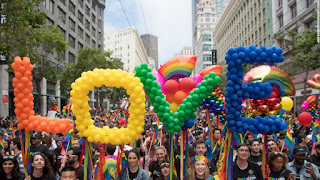
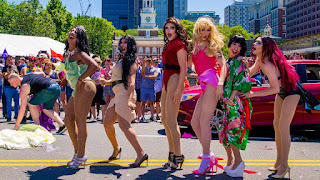
COLOUR!
Drag Queens, Pride, Performance in theatres, we're always seeing bright, happy colours. Visuals that make you go wow. Always colour is see with Drag Queens and documetnaries related to Gay Pride and this was what I wanted through Re-Werked. To do this, I started by looking into the potential cameras avilable which could help me get that warm, colourful and saturated footage. Although I knew the footage could be altered in Post-Production through grading. When speaking to Rollo Hollins, he explained "you had to shoot to a final look - which was much of my training, esp having started on film" (Rollo Hollins) when he was talking about filming Alfred and Jakobine. This is what I wanted to achieve. I hate the idea of making more work for the editor and the phrase 'We'll fix it in post'. Don't break it and it doesn't need to be fixed!As well as colour within the footage, I also needed a camera which I could operate with confidence, was easy to operate handheld or with a shoulder rig and I could change the lenses, although I had cameras avilable which I could zoom in with and change the shot, I really wanted that prime lens shot with the background completely blurred out to add more drama to the interviews with questions that got really personal and deep. And of course, a camera that could do high quality footage. At first, I was looking into getting a camera that could shoot in 4K, as Pete Beard at the RTS Talk explained that if you shoot in 4K, you can zoom in and not loose any quality. However, this is a easy way of shooting and also wasn't in the budget range. I tested many cameras; Canon 60D, Mark 5D IV, Sony A7S ii. All fantastic cameras which I was confident with but all offered different issues. One was I found out we couldn't get a sound operator so I needed a camera where I could have sound being set up with it. I tested the Black Magic Mini Ursa but this camera was far to advanced for me. The Sony PMW-EX Camera didn't offer enough quality and I couldn't change the lenses.
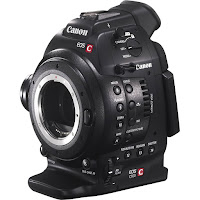 I ended up finding the Canon C100. This camera is light weight and easy to operate handheld and even easier with a shoulder rig. The camera films at Full HD 1920x1080 and takes EF Canon lenses. The camera can film both C-Log and none-profile footage offering footage which can give a higher quality grade. However, the none-profile footage is exactly what I was looking for. When I tested the camera, the colour quality of this footage was nice, bright and what I wanted, if need be you could add in 5% saturation in post to add more colour if it was needed but I don't think it will be;
I ended up finding the Canon C100. This camera is light weight and easy to operate handheld and even easier with a shoulder rig. The camera films at Full HD 1920x1080 and takes EF Canon lenses. The camera can film both C-Log and none-profile footage offering footage which can give a higher quality grade. However, the none-profile footage is exactly what I was looking for. When I tested the camera, the colour quality of this footage was nice, bright and what I wanted, if need be you could add in 5% saturation in post to add more colour if it was needed but I don't think it will be;The Canon C100 also has 2 XLR audio input so I can easily record the audio for the documentary with this camera. Using it with a shoulder rig and nice and easy as well which is good as it wanted to go handheld in the documentary. I was also adviced to do this, "If you can do it handheld, do it. The footage looks and feels more natural and it's less kit and less budget spent" (Lee Thomas). What's most important is that I'm confident operating this camera, I know that if I'm not confident with the camera, it would show in the footage.
As the script developed and I researched into Drag Queen performances on RuPaul's Drag Race and Britains Got Talent, they had a large amount of coverage and from this I new I required a multi-camera set up for the performance shoot. Due to budget, I couldn't rent two more Canon C100 cameras so I needed to find a camera that had footage that closely matched. Talking with DOP Sam Creamer, I ended up testing the Panasonic DVX200 against the C100 and found they closely matched and due to the kit being from UCA, it didn't cost us any money so we could get 2 more cameras and then I was able to plan out my visuals for the performance and make the camera plan for the shoot.
I watched documentaries for inspiration for my own visuals. I watched Alfred & Jakobine, Jim & Andy, Queer Britain, Dreams of a Life, Ru Paul's Drag Race, all of these helped me to decide on the visuals but also it was reading the script over and over and thinking about the best way to tell and show this story visually. The movement of the camera is very important to me. Rollo Hollins and Lee Thomas both told me in my research that they love handheld footage and it's natural to be in documentaries. But for me, I didn't want the camera moving unless it worked with what was happening on screen. Opening of the film; Beautiful countryside, fields of green, quiet town in rural cornwall. I don't want the camera moving and shaking here. I want it stable/still with nice movement to allow the audience to really see the town and how unlikely it is for this person to be here and to be a Drag Queen. As we move towards the travel sequence, I'd need to go handheld for ease of operation during these sequences anyway but I feel that here the camera should be moving more as the excitment is starting to build, the nerves grow, the climax is approaching. By the time we're at the theatre, performance day. Here nearly all the footage is handheld, actuality interviews instead of static, locked off as everyone is rushing around and it builds and builds until finally we get to the performance, what we've been getting to.
All this I got from Alfred & Jakobine as they shot most of the footage tripod but when it came to the taxi driving across America we went handheld and also in RuPaul's we get a lot of handheld during the build up to the catwalk and finally at the catwalk, WOW! Here's what it's been leading to.
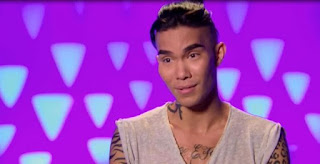 With interviews, deciding how to shoot & light these was one of the most difficult in planning my visuals. At first I wanted to go with straight forward interviews but this didn't feel right. Didn't give anything to the story and almsot felt uncomfortable. RuPaul's Drag Race was a big inspiration for how I chose to shoot my interviews. Tanya out of Drag for their interviews came from this but showing them as Miss Zodi in actuality. The interview is where we learn who they are, they tell their story and give us the information we need. Later on in the film, showing Tanya as Miss Zodi and interviewing her works really well as we've come on the journey with her. For lighting, I've gone with basic lighting, one key light and defuser which worked really well for my tests with Natasha and Ru:
With interviews, deciding how to shoot & light these was one of the most difficult in planning my visuals. At first I wanted to go with straight forward interviews but this didn't feel right. Didn't give anything to the story and almsot felt uncomfortable. RuPaul's Drag Race was a big inspiration for how I chose to shoot my interviews. Tanya out of Drag for their interviews came from this but showing them as Miss Zodi in actuality. The interview is where we learn who they are, they tell their story and give us the information we need. Later on in the film, showing Tanya as Miss Zodi and interviewing her works really well as we've come on the journey with her. For lighting, I've gone with basic lighting, one key light and defuser which worked really well for my tests with Natasha and Ru:This works really well in lighting my subject and the light looking nice and natural, the diffuser takes away the harsh light and helps bring out the skin tones more as they don't have a bright light shining on them and also makes the subjects more comfortable as they aren't having their eyes strained.
In terms of Amy, Oliver and Sapphire. Working with Jemma on how this would be done it was decided to film these in their Drag Acts so that they're established quicker. Tanya is our main focus. Tanya's background for their interview as well is all to tell us about who they are. Background is having her make-up, outfits, photos, phone, wigs, etc. all back there to tell us more and more about her. Oliver and Sapphire's interview will be in a location relevant to performing (The Theatre) as they still need a relevant location but not one with as much detail as Tanya's.
The choice of how to film the interviews came from speaking to Sam Creamer. He said shooting with one camera is often how he does it. Rather than two cameras set up and getting two different shots, working with one camera and changing the shot when it's relevant to not only mean you have less kit and save budget, it also gives you more as a DOP which I personally want. Although it makes operating more work it benefits the documentary more. This is also where a lens change might happen as when the question goes more personal or serious, such as when Tanya talks about being bullied or Tanya's parents talk about their opinion of Miss Zodi, here I want the background blurred out and the focus to be 100% on the subject, going close and personal to add drama. Here was the choice of the 24mm-70mm Tamron lens for standard filming and zooming in and changing the shot during interviews when needed and the 50mm Canon Prime Lens for when the interview gets serious and personal.
All of this together is my visual plan for this documentary. To show this amazing story about a truly extraordinary Drag Queen who has a great story to tell the world.
PRE-PRODUCTION - SHOT LIST (V3)
With the newest script being done, I updated the shot list. I was already happy with the layout of the 2nd shot list so I chose to keep it. However, how I sectioned the list out to match the script no longer worked as the script now doesn't have sections. So instead I divided the list into sections again but with sections that we would film at the same time. The sections are;
Intro
Tanya in Bodmin
Traveling
Oliver
Sapphire
Amy
Performance
Which helps me divide up the sections of the shot list and be able to make a shooting order once we get closer to the shoot.
PRE-PRODUCTION - SCRIPT BREAKDOWN (DRAFT 3)
Jemma gave me the latest version of the script and explained that it had gone under a lot of changes. Frankie Sinatra had dropped out and also Jemma and Victoria had been told to change the layout of the script and rather than having the questions, to say what they'll be talking about instead. Although, Jemma and I agreed that before the interviews, I'll review the questions and note which ones I may need to change shot on but prior to that it'll be listening to what's being said during the interviews and trusting my gut as a DOP.
Page 1
Almost all of the first page is the same as the previous script, just formatted differently, However, now Oliver isn't an expert watching Tanya, he'll also be performing as will our new Drag Queen Sapphire Stonee. The expert Drag Queen is another female Drag Queen called Amy who Jemma has contacted. Oliver and Sapphire's interview didn't have a location written on them so I spoke with Victoria and Jemma about this and they explained they wanted them to be interviewed at the theatre. I did note however, that they'll need to be relevant to our Queens so the dressing room, stage, etc.
PRE-PRODUCTION - THEATRE RECCE & FLOOR PLAN
Victoria explained to me that we now have a theatre. The Tom Thumb Theatre in Margate, Kent. The owners allowed us to come and recce the location so Jemma and I went to take a look. The Tom Thumb Theatre is a very small theatre which holds local performances in Margate. It equipped with a lighting desk, lights, sound system, curtains and a bar upstairs as well as a bar area for the performers to get ready. Below are my recce photos from the location:


PRE-PRODUCTION - SHOT LIST (V2)
Below is the second version of my shot list. I found the first version wasn't hugely detailed and if I were to bring on another operator during the shoot prior to the performance and needed them to know what we were filming, they wouldn't have known half of what they needed. With this, I divided the shots into the sections of the script I'd done with my breakdown to make it simpler to understand. I also added in the location, whether it was interior or exterior, shot type, what we'll be seeing in the shot and finally the movement needed. A lot of the shots haven't changed from the first list, a fair few more have been added and also I've given more detail to the expert sections and performance section.

Now that we've got interviews with a number of different contributors, I wanted to stand these out. So I colour coded them orange for interviews, this is either static, actuality or vox pops and had them at the top of each section. We now also have an interview between Tanya's brother and father so after doing my script breakdown I chose to do the interview as a double interview and then change the shot to a single of whoever is talking when it's needed, this way we get both interviews at once and also save time on the schedule.
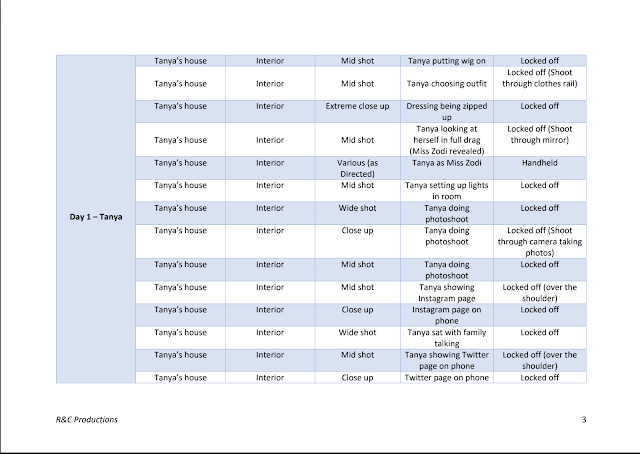
As you can see from the first few pages, I've chosen to have the first part of the documentary mostly shot on a tripod. My reasons behind this is that through my research with DOP's, I've learnt that the movement of the camera is just as important as the look it gives as well. So I want the opening to be the full focus on Tanya, calm and relaxed as we learn about this incredibly out going and talented Drag Queen in this tiny town in Cornwall. As we move forward to the traveling we go handheld, this is both to build up the excitement as we move closer to the performance date and for ease of operation while traveling.
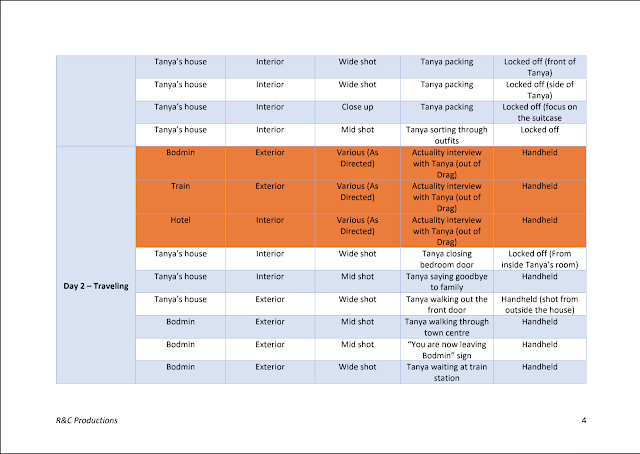
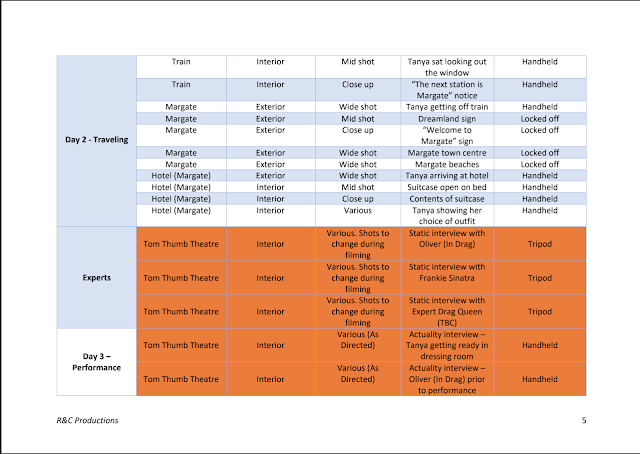
With the GV's in Margate, I wrote in the most likely landmarks that'll make the audience realise where we are, as well as aiming to find a nice sign saying "Welcome to Margate". But if this isn't possible it'll be GV's of Dreamland, beaches, all the things that show a small seaside town. As you can also see, there are a lot of interviews being done towards the performance. All the ones apart from the final expert interview are done handheld as this is literally just before the performance from Miss Zodi and here is where the excitement will be at it's highest.
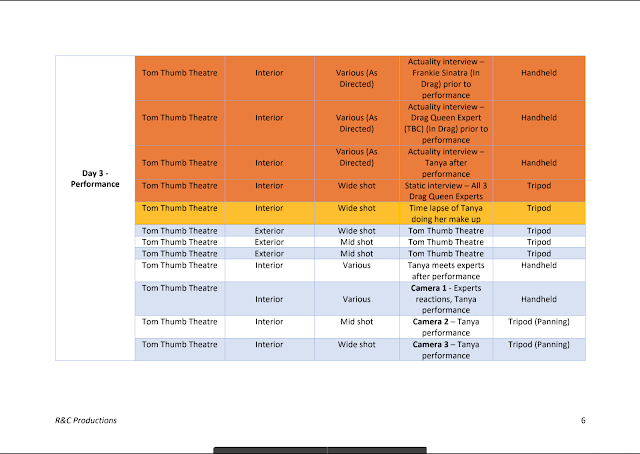
My choice at the end of the film to have the interview with the experts all being in shot (as a 3 shot) I think will be a really good way to end it as it'll be slightly like the panels seen in my Drag Queen video research where the judges talk between themselves and it adds a little more than just saying "yes i really liked it because..." it'll allow the experts to talk between themselves and add much more actuality to the final part of Tanya's journey.
As you can also see, I colour coded the time lapse for Tanya's make up so it stands out as something different and also noted what each camera during the performance will be filming and the movements needed from each.
PRE-PRODUCTION - SCRIPT BREAKDOWN (DRAFT 2)
After receiving the second draft of the script off Jemma, I went ahead and did my breakdown again. This script was far more detailed but I was able to still use some of the visuals that I'd planned in my previous breakdown.
Page 1
The opening of the film has stayed the same, starting with showing Tanya's room. I noted showing Tanya's 'tools', so make up, outfits, same as with the previous breakdown. Now I've been given the name of Tanya's town which is Bodmin. I noted to google what sort of landmarks can be found in Bodmin so that I can get some reference images to add into the shot list as I can't recce the location before filming. With the titles, this draft was written just before the Title Sequence meeting between me and Jemma had been. Since then this has changed from a time lapse to a photo montage.
Now that we are talking more about Tanya's instagram as Miss Zodi, I've noted showing both her Instagram on screen (likely through the over the shoulder shot and close ups) and also having photos from her Instagram on screen. Tanya's actuality hasn't change a huge amount, still showing her becoming Miss Zodi with the shots. The interview is still the same as previous but I added in what lens to use first (24mm-70mm) to show Tanya and all of the room to really establish her then later on the lens change comes in. I also noted with the question about Miss Zodi's evolution to have more photos from Tanya's Instagram to show her first looks in comparison to her latest. This will be a job for post-production though.
ROLLO HOLLINS INTERVIEW (DOP RESEARCH)
I was first shown Alfred and Jakobine back in 2015 when I did a Documentary Masterclass course through the BFI Film Academy. The Director of the documentary, Jonathan Howells, came and did a Q&A and screening of the film. After keeping in contact, I emailed Jonathan to ask if he could pass on some research questions I had for Rollo Hollins, who was the Director of Photography for the documentary. The questions I sent over were:
1. How long have you been a Director of Photography?
2. Are Documentaries your focus as a DOP or are there other forms? (e.g. Short/feature films, music videos, commercials, etc.)
3. How did you come to be the DOP for A&J?
4. How much of the Pre-Production involved working with Jonathan as the Director and working independently to plan out for visuals for the film?
5. What planning did you do for A&J? (E.g. Storyboards, Shot lists, mood boards, test shoots?) or was is all planned and shot on the day? If planned on the day, what process do you go through to set up the interviews and the actuality footage?
6. What camera was used to film A&J and why did you choose that camera?
7. Was A&J single or multi-camera?
8. (If multi-camera) Where you in charge or finding the rest of the camera crew or did that fall to the role of the Producer?
9. How did you decide on the lighting for A&J interviews?
10. With Lighting, how do you work through lighting an interview? Do you have a structure you
follow with each or do you "Free style" it when arriving on location?
11. How did you film the driving sequences when Alfred and his son are in the taxi?
12. In regards to the style of filming, at points where we're on location (in the garage, following Jakobine in the garden) what was the choice of going handheld rather than using a rig?
13. What paperwork did you need to produce as the DOP?
14. How long did it take to film A&J? Were there any reshoots/pick ups for the film?
PRE-PRODUCTION - TITLE SEQUENCE PLANNING
Myself and Jemma sat together and talked about what our title sequence should be. Having watched Documentary for our research, they all have simple and quick title sequences to get you into the film. Alfred & Jakobine was juts a shot of the taxi driving past and then the title fades in, Jim & Andy is slightly longer as Jim Carrey talks about being sat on the beach and we see very cinematic shots of the beach and sea side, then when he explains "What happened next was out of my control" we see original footage of Jim as the character Andy and the title types in. Dreams of a Life didn't have a title sequence, you just jump straight into the film.
Jemma and I both agreed that here is where we can reveal Tanya as a Drag Queen. I suggested a very cinematically shot title sequence where we'd get lots of Prime Lens footage of Make-up brushes, close ups on Tanya's skin and eyes as she's doing her make up but not revealing her yet and finally when she puts on her wig we're behind her and crab sideways with the camera to see the Mirror and reveal her as Miss Zodi and then the title Re-Werked comes up.
Jemma didn't agree with this, she said it doesn't fit with the documentary and also half the shots I'm discussing will be in the documentary anyway. She wants something simple but effective for the titles.
Next, I suggested a time lapse of Tanya doing her make up so we literally see the transform into Miss Zodi, having it so the camera is the mirror, Tanya would look straight into the camera and at the end we would see her in full drag and the title would come up. I got the idea from videos such as the one below I found online:
It's very quirky and fits with the theme that my visuals got for, it's different and it's not cinematic and more realistic which fits better for a documentary. Jemma however, didn't want to go forward with this either. She explained that we've already agreed to have this type of time lapse in the film prior to Tanya's performance and she doesn't want it to be the same, she wants something different for the titles.
Jemma and I both planned out how we could make a quick but effective title sequence and Jemma ended up showing me this video below:
Jemma explained she'd like something like this, so it's sort of a time lapse but more of still photos showing the transformation rather than seeing all the movement which we'll be getting in the time lapse of Tanya getting ready for her performance. We spoke and finally came to the decision that we will set up a background (likely coloured to fit with the theme) and have Tanya do a layer of makeup, then take a photo, then again and keep doing this so we move between all these photos and slowly see her become Miss Zodi, this doesn't reveal to the audience how much work it is for her just yet but gets them hooked as you can already see she's a female Drag Queen. Later when they see all the effort it is for her to get ready, that's when they're shown how difficult it is and how passionate she is about doing this.
Sunday, 9 December 2018
PRE-PRODUCTION: DRAG QUEEN PERFORMANCE VIDEOS
With the biggest part of the shoot being the performance of Tanya as Miss Zodi, I've already decided that I'll need to have more than 1 camera to film this performance in order to get the coverage I need for the edit. Prior to this, I'm still unsure how to go about filming this and also what camera should be filming what coverage, where to place the cameras and how to divide up the coverage between the cameras. From this I did a little more research into Drag Queen performances both from footage on peoples phones and what we've had on TV over the years.
Ru Paul's Drag Race
My main form of research to this was my review for Ru Paul's Drag Race where I reviewed the end of the episode where the 2 Queens are up for elimination and they have a lip sync battle to remain in the competition. Below is an example of this:
This lip sync is to a very fast and high energy song so the performance given by both Queens matches that. Through this, we see shots of both Queens performing and also the judges reactions. Likely, this is what I will also be aiming to film for Tanya's performance. We see a mixture of mid shots and wide shots for the actual performance and lip sync to show the dancing through the wides and focus on the facial expressions through the mid shots. We get jib shots through the performance from another camera to add in some movement (apart from the 2 cameras panning) and also it gets across the size of the stage they're on. Finally we have a wide shot on the judges and a single on Ru Paul (this changes between the judges) over all I'd argue there is around 5-6 at a minimum for this performance shoot. I'll likely have half of that (3) at the most if possible.
Looking into other performances we've had on TV over the years, I found the video below showing Drag Queens we've had on talent shows such as Britain Got Talent and American's Got Talent:
Camera work is VERY similar but that could also be due to the fact it's on TV and this can be a usual style of filming a performance. Shooting a mid for the detail in the facial expression and bring us closer to the performer. Wide shot to show the movement happening and then audience shots to see their reactions, It's been done in comedy shows, talent shows and performances. One camera move I noticed in La Voix performance was a slow zoom in which takes us from the wide to the mid seemlessly without even noticing but while she's leading up to hitting the final note the camera creeps in, almost like it's hinting that it's about to hit the big note and then cuts to the jib to swing out with the note and reveal the huge audience applause. This is almost the same throughout the videos in this compilation. Laydee Kinmee is slightly different in the sense that their performance is actually singing so the cameras really focus in on the face while they sing.
Below is a compilation video of different Drag Queen performances and this alone shows me the difference in performance we could have:
However, watching all of these different performances, I feel that the set up which would work best is actually the simpelest one. Having 3 cameras: Camera 1 (the main camera) - Audience and close ups on stage, handheld. Camera 2 - Mid shot of performance, tripod and panning as the performer moves. Camera 3 - Wide shot and zoom ins and out, tripod and panning as the performer moves. With this set up I'll be able to capture all the footage I need for the edit and get the coverage of the entire performance. The main aim for this is that the camera work shows the performance and we let our Drag Queen do the work for us. Although this is more reality TV Style than documentary, I think it's the best option and works well for the documentary.
Ru Paul's Drag Race
My main form of research to this was my review for Ru Paul's Drag Race where I reviewed the end of the episode where the 2 Queens are up for elimination and they have a lip sync battle to remain in the competition. Below is an example of this:
This lip sync is to a very fast and high energy song so the performance given by both Queens matches that. Through this, we see shots of both Queens performing and also the judges reactions. Likely, this is what I will also be aiming to film for Tanya's performance. We see a mixture of mid shots and wide shots for the actual performance and lip sync to show the dancing through the wides and focus on the facial expressions through the mid shots. We get jib shots through the performance from another camera to add in some movement (apart from the 2 cameras panning) and also it gets across the size of the stage they're on. Finally we have a wide shot on the judges and a single on Ru Paul (this changes between the judges) over all I'd argue there is around 5-6 at a minimum for this performance shoot. I'll likely have half of that (3) at the most if possible.
Looking into other performances we've had on TV over the years, I found the video below showing Drag Queens we've had on talent shows such as Britain Got Talent and American's Got Talent:
Camera work is VERY similar but that could also be due to the fact it's on TV and this can be a usual style of filming a performance. Shooting a mid for the detail in the facial expression and bring us closer to the performer. Wide shot to show the movement happening and then audience shots to see their reactions, It's been done in comedy shows, talent shows and performances. One camera move I noticed in La Voix performance was a slow zoom in which takes us from the wide to the mid seemlessly without even noticing but while she's leading up to hitting the final note the camera creeps in, almost like it's hinting that it's about to hit the big note and then cuts to the jib to swing out with the note and reveal the huge audience applause. This is almost the same throughout the videos in this compilation. Laydee Kinmee is slightly different in the sense that their performance is actually singing so the cameras really focus in on the face while they sing.
Below is a compilation video of different Drag Queen performances and this alone shows me the difference in performance we could have:
However, watching all of these different performances, I feel that the set up which would work best is actually the simpelest one. Having 3 cameras: Camera 1 (the main camera) - Audience and close ups on stage, handheld. Camera 2 - Mid shot of performance, tripod and panning as the performer moves. Camera 3 - Wide shot and zoom ins and out, tripod and panning as the performer moves. With this set up I'll be able to capture all the footage I need for the edit and get the coverage of the entire performance. The main aim for this is that the camera work shows the performance and we let our Drag Queen do the work for us. Although this is more reality TV Style than documentary, I think it's the best option and works well for the documentary.
PRE-PRODUCTION - SHOT LIST V1
Once I'd finished my script breakdown I had to write up my shots into a shot list. To organise this and make it simpler for both myself and the Director, I organised the shots by shooting days apart from the opening sequence as this is separate so we'll likely be filming this at the same time as Day 1 - Tanya.
Page 1
When writing up the shots, I listed what we'll see in the shot, the type of shot it is and if it's locked off or handheld. At the beginning of each section I wrote in the interviews, although I couldn't decide how to explain when to change the shot during the interview or when to change the lens. However, as I've detailed it in my Script Breakdown which question to change the shot and which question would be best for a lens change I felt this wasn't needed in the shot list.
Page 2
Although I've been quite detailed in my first page, towards the end of the list, specifically as we get into the experts interviews, I've noted that I don't have much in the way of coverage to go with the experts interviews, even with the shots I'm getting during their interviews. I may have to re-look at this section of the list and the documentary and start to consider more footage I could get.
Page 3
Now I've written up the shot list I've also noticed that with the theatre, I haven't noted any footage to establish the location, the setting or even the performance. This gives us next to nothing prior to the performance and the audience would want to see where we are, what's going on and also have build up of tension going into Tanya's performance. Although this is only the first version and I may have to do another script breakdown with new drafts as they come in so this will likely change.
Saturday, 8 December 2018
CAROL MORLEY INTERVIEW (DOP RESEARCH)
I have previously written up a review on the Documentary Dreams of a Life. After researching this documentary I tried to contact the creator Carol Morley through her agent. She replied and happily offered to answer 10 questions. With Carol being a Director, Producer and Self Shooter, me, Jemma and Victoria all put forward questions which we wanted to ask in relation to the documentary. Mine were:
- Why did you choose centre frame interviews all with the same background?
- What made you decide to use reconstruction in this documentary?
- How did you plan out all the visuals for this documentary including style of
interviews, archives and reconstruction
Carol explained that the choice of background was in relation to the story. She explained:
The choice of background wasn't anything like I'd suggested in my initial write up on the documentary. However, I did get it right that it kept everyone connected, but the style of this being done really goes to how deep the story is. Carol explained that when you see an interviewee in their own environment you will read into the elements that surround them and this wasn't what she wanted, she wanted the main focus to be Joyce and their relationships with her as all you can go off is what they say and their body language.
I asked about the interviewees talking directly to the camera and why this was a choice. Carol explained
Carol really looked into the relationships of these characters with Joyce and told that through the camera work. Journalists who would have only heard of Joyce via printing her story in the paper getting a wide shot as there's no real history together or emotional. Yet Martin gets the close frame as he was in a relationship with Joyce and there's more history together and much more emotion to his interview as well. Also the style of the interview is literally them telling the audience the story of Joyce which clearly is the main aim for this documentary as nothing was known about her when the story was released in the paper.
Finally, I questioned how Carol had planned out the visuals for this documentary. Carol first explained the choice of camera:
Carols choice of visuals for this documentary clearly won't match with what I'm planning but she went into so much detail and really looked into the story of the characters she was interviewing but also who Joyce was and how she wanted to tell her story and being her back almost, through the documentary. This has really made me consider how I'm to do my own visuals in our documentary.
- Why did you choose centre frame interviews all with the same background?
- What made you decide to use reconstruction in this documentary?
- How did you plan out all the visuals for this documentary including style of
interviews, archives and reconstruction
Carol explained that the choice of background was in relation to the story. She explained:
"The background is a map of London, taken from the AZ, and re-coloured. Joyce had lived all over London, and lived in London all her life, and eventually got “lost” in it. Place felt like an important part of her story. Place, losing her place in the world, falling through the cracks perhaps, seemed a major component of the story that the film was going to tell." (Carol Morley)
The choice of background wasn't anything like I'd suggested in my initial write up on the documentary. However, I did get it right that it kept everyone connected, but the style of this being done really goes to how deep the story is. Carol explained that when you see an interviewee in their own environment you will read into the elements that surround them and this wasn't what she wanted, she wanted the main focus to be Joyce and their relationships with her as all you can go off is what they say and their body language.
I asked about the interviewees talking directly to the camera and why this was a choice. Carol explained
"They all talk directly to camera ( I positioned myself very close to the lens - unlike Errol Morris who uses a projection of himself on a mirror in front of the lens to get a similar effect) because I wanted them to have close eye lines to the camera, and therefore the people watching the film. I gave each participant a frame size in advance based on how well they knew Joyce. So the MP/ Journalists have the wider frame and Martin the close frame. The frame never changed during their interview. I didn’t want a sudden zoom in to accompany something emotional, thus signaling the emotional content, so I used prime lenses, with a fixed frame size." (Carol Morley)
Carol really looked into the relationships of these characters with Joyce and told that through the camera work. Journalists who would have only heard of Joyce via printing her story in the paper getting a wide shot as there's no real history together or emotional. Yet Martin gets the close frame as he was in a relationship with Joyce and there's more history together and much more emotion to his interview as well. Also the style of the interview is literally them telling the audience the story of Joyce which clearly is the main aim for this documentary as nothing was known about her when the story was released in the paper.
Finally, I questioned how Carol had planned out the visuals for this documentary. Carol first explained the choice of camera:
"I wanted a different feel to the various aspects of the film. So the reconstruction is shot on 16mm (very occasionally super-8), which in itself, because of the grain alone, carries with it the idea of how we are used to seeing the past. The interviews were shot on digital video, and then the Bedsit was shot on a high end RED camera to give almost a hyper real quality to it – so that in a way is the “realest”, in terms of being coded real, of the elements!" (Carol Morley)
Clearly the choice of camera had clearly been thought through. The choice of shooting on 16mm/Super-8 to fit with the style of showing the audience the past but then moving onto shooting digitally and giving each of the interviewee's a different frame size in relation to their relationship with Joyce when she was alive tells the story of their relationship without the audience realising
PRE-PRODUCTION: KIT LIST
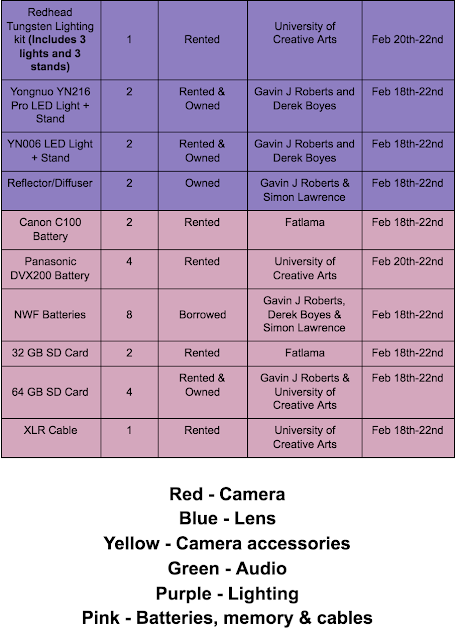
Above is my Kit list for our Documentary 'Rewerked'. When making up this Kit List I've taken into account every detail for the kit, right down to the amount of batteries we'll have and memory cards. Requested by the Producer, I've also added in what days I need each piece of kit (working off her Schedule). For my own personal benefit I colour coded the list so that I can easily find what I need but also so that if I were to give this to one of my camera operators, they can easily find their way around and see what's needed. On the day of the performance, we'll have the most amount of kit and this is where this list will come in handy to also be a small check list to keep everything organised.
Through my camera tests I've been able to decide on what camera I'm using. My lighting tests and location research have helped me to decide to use my own personal lights. My LEDs (YN006 LED) to match with Tanya's room but also as a fill light outside if needed. Mixed in with the diffuser for interviews to give a softer light. As well, the Diffuser I have can also be a reflector which will be helpful with outdoor shoots/interviews. With actuality footage I may not need it but it'll be on stand by in case it's required.
In terms of audio equipment, I'll likely have to do audio and camera for interviews so I've added in the Rode Shotgun microphone to go onto the Canon C100 for back-up audio and also 4 lapel microphones. 1 for Tanya and the others for the experts and any other interviewee's we have. I also added in a Zoom H4 Audio recorder which I'll have set up for the day of recording the performance as I'll need to record:
- Tanya
- 3 Drag Queens
- Ambiance
- Vox pop style interviews
- Performance audio
With that in mind, I know I can have my 3 cameras recording audio from the back of the theatre, Tanya's microphone connected to my main camera and then the Zoom H4 to record the other Drag Queen.
PRE-PRODUCTION - ARRANGING 2 EXTRA CAMERA OPERATORS
As I've seen I'll need extra cameras to film Tanya's performance as her Drag Queen act Miss Zodi, I'll have to bring in some extra camera operators as well.
Rather than contacting outside UCA and hiring Camera Operators in. We're chosen to go with current students as we've already worked with them and also they'll already be familiar with the cameras they'll be using (Panasonics DVX200). With this, I've contacted Simon Lawrence, firstly because he's got a lot of experience in camera operating and secondly because he's been my main camera operator for my short film RUN (Still in Production). Simon has a good understanding of cameras and also is great to work with. His communication is excellent and if you give him a shot list he'll work off it but he's not afraid to grab a shot if it comes up and he thinks it'll help the Director/Editor in the edit.
Next is Zak Wilkins. Zak was one of the operators for the Studio Production Steal the Style. Zak worked well under pressure and was one of the main cameras filming our Drag Queen performance in the show. Zak is easy to work with and also great fun to have on set. Although we need operators who will get the job done I also need crew who can be relaxed on set and keep everyone in a good mood. From the research I did with documentary filming, working ethic is something that'll make or break the performance shoot as it'll be the biggest and likely most stressful day.
Rather than contacting outside UCA and hiring Camera Operators in. We're chosen to go with current students as we've already worked with them and also they'll already be familiar with the cameras they'll be using (Panasonics DVX200). With this, I've contacted Simon Lawrence, firstly because he's got a lot of experience in camera operating and secondly because he's been my main camera operator for my short film RUN (Still in Production). Simon has a good understanding of cameras and also is great to work with. His communication is excellent and if you give him a shot list he'll work off it but he's not afraid to grab a shot if it comes up and he thinks it'll help the Director/Editor in the edit.
Next is Zak Wilkins. Zak was one of the operators for the Studio Production Steal the Style. Zak worked well under pressure and was one of the main cameras filming our Drag Queen performance in the show. Zak is easy to work with and also great fun to have on set. Although we need operators who will get the job done I also need crew who can be relaxed on set and keep everyone in a good mood. From the research I did with documentary filming, working ethic is something that'll make or break the performance shoot as it'll be the biggest and likely most stressful day.
PRE-PRODUCTION - SCRIPT BREAKDOWN (DRAFT 1)
After getting the first draft of the script off Jemma I began to break down the script and note where I would require visuals and what I would require, I also noted questions within interviews that I may want to change shot or change lens to a 50mm Prime lens as the question goes a lot more personal and could work better if we got closer to add drama.
Page 1
Page 1
Reading through the script, the opening is establishing Tanya but by showing her room and things like her make-up, wigs, outfits, room, etc. I noted having close up shots such as on the make up brushes, her eyes while she's doing make up, behind Tanya as she does her hair. All of these to hit at who Tanya is for a the opening before actually revealing her. Moving over to the GV's of Cornwall, we aren't able to recce the location annoyingly so I noted filming areas which stand out, such as small independent shops, the town centre, fields, signs which show the audience where we are.
Titles need to be planned through with myself and Jemma.
Through the next section we'll need to get plenty of B-Roll of Tanya looking through her outfits, wigs, sorting out her wigs and preparing for an Instagram shoot which involves getting into Drag, doing her make-up setting up lights and camera for the shoot. The main thing to show through the footage is that Tanya does all this on her own. All of this will likely be handheld but I'll add in some footage on tripod for close ups to ensure footage is stable. The actuality interview which has Tanya talking the audience through her Instagram looks, I've noted to have the interview over the shoulder but also moving forward to show the audience her phone but also to get the interview itself.
Thursday, 6 December 2018
PRE-PRODUCTION - PANASONIC DVX200 & CANON C100 COMPARRISON
 As we require a second (or even third) camera for the documentary but don't have the budget to rent another camera, I spoke to Sam Creamer about the cameras we have avilable in the Tech Store and if any would match up with the Canon C100. He suggested testing the Panasonic DVX200 against the C100 as he thinks it'll be the best camera to match up with it.
As we require a second (or even third) camera for the documentary but don't have the budget to rent another camera, I spoke to Sam Creamer about the cameras we have avilable in the Tech Store and if any would match up with the Canon C100. He suggested testing the Panasonic DVX200 against the C100 as he thinks it'll be the best camera to match up with it. What's also handy about the Panasonic is that we can rent them from University without any rental charge, they have a long zoom which is perfect for the performance videos and everyone on the course has had a chance to operate them so when it comes time to get extra camera operators (which will likely be people from the course).
What's also handy about the Panasonic is that we can rent them from University without any rental charge, they have a long zoom which is perfect for the performance videos and everyone on the course has had a chance to operate them so when it comes time to get extra camera operators (which will likely be people from the course).To compare the two cameras I used the UCA baseroom as it's constantly lit with white lighting in there and had my subject (George Lock) sat on the couch and just got him to chat and move in front of the camera. I set both camera's up side by side and matched the settings together as best as I could. As I was still undecided on whether to use C-Log or not on the Canon C100 I kept it on for this test to see the difference:
As you can see from the first test, the footage does not match and this is due to the C-Log. With the footage needing grading it makes it a lot harder to match up with the Panasonic. I took off the C-Log and did another test with another subject (Jemma Cotterell) and as you can see, the cameras match up much better. The Panasonic's footage slightly more grey as you can see the colours of the white background change between the two and I also feel that the detail in the C100 is more than the DVX200 but these are minor and just myself being VERY picky.
This camera will work as our 2nd (and if needed 3rd) camera for the documentary.
GEROGE BURT INTERVIEW (DOP RESEARCH)
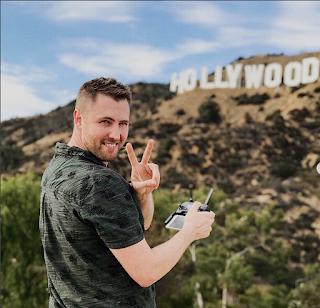 George Burt is a Feature Film Director of Photography who works primarily in Horror films. However, George was the DOP for the BBC 3 Documentary Tulisa, The Price of Fame back in 2014. George has won many awards for his work in Cinematography and I was fortunate enough to be a Camera Trainee under him for a short film back in 2016. I've previously written up a short interview with George for my Transitions Unit.
George Burt is a Feature Film Director of Photography who works primarily in Horror films. However, George was the DOP for the BBC 3 Documentary Tulisa, The Price of Fame back in 2014. George has won many awards for his work in Cinematography and I was fortunate enough to be a Camera Trainee under him for a short film back in 2016. I've previously written up a short interview with George for my Transitions Unit.Through all my interviews with DOP's, I've constantly asked how to set up interviews, shoot a documentary and working with cameras but I haven't asked much about lighting. So this was my main question for George which was how do you light a documentary?
"That's like asking how do you write a script? It all depends on the story and structure. There's no one way to do this" (George Burt) George explained to me that lighting is an art, as a DOP you are in charge of bringing the Directors vision to life through camera and lighting. George said lighting is so important in narrative films but in documentaries this isn't always the case.
"Documentary crews could be as big as 20, with a Director, DOP, Lighting Director, Sound Operator, 1st AD and Producer all on set. But it can also be as small as one person being the Director, Producer, DOP, Sound and Lighting all in one. This is where you need to consider what's possible with the size of the crew and of course the budget" (George Burt)
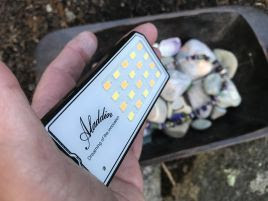 George explained that documentaries can often use natural lighting as you're filming actuality. You aren't making beautiful films you're filming real people in real life. He went on to say if you're in a really dark room or location then you'll obviously need to bring lights in but before then you can simply have a small LED in your back pocket. George showed me a small LED called Aladdin Eye Lite (picture to the right) which is smaller than my hand but he explained it's very bright and a handy little light to have in your back pocket to add in some extra light to interviews to add in the detail on the face.
George explained that documentaries can often use natural lighting as you're filming actuality. You aren't making beautiful films you're filming real people in real life. He went on to say if you're in a really dark room or location then you'll obviously need to bring lights in but before then you can simply have a small LED in your back pocket. George showed me a small LED called Aladdin Eye Lite (picture to the right) which is smaller than my hand but he explained it's very bright and a handy little light to have in your back pocket to add in some extra light to interviews to add in the detail on the face.
George did go on to explain that your interviews need to be shot and lit nicely as these are where you'll get the information off the contributors. He explained that often 3 point lighting is a classic style to set up interviews but you can easily do it with 1 or 2. One source light with a diffuser on the subject is an easy but effective interview light set up but George explained if you add a fill light in the background it'l' give you the detail behind the subject.
Wednesday, 5 December 2018
PRE-PRODUCTION - LIGHTING KIT TESTS & CHOICE
With my camera tests nearly done (only a comparison test remaining) I moved on to testing the lighting options I have available to me. Through my camera tests I was also testing lighting at times to see how the cameras would work but through my testing and also my research into other DOP's I have found some good techniques for lighting.
One of my main issues is that I'm not able to recce Tanya's house which is one of our main locations and so I can't see what the location is like and most importantly, I can't see how the lighting works is within the house, how much natural lighting gets into the house and what sort of lighting is within the house. Is it white, Tungsten, Coloured and does the lighting strobe or done via LED/Powered bulbs?
Jemma and Victoria contacted Tanya and asked for photos of her house so I could make an assumption on what lighting I would need to bring over to the location. I'm unable to post these photos however as Tanya has requested they not be shown.
Tanya's room has white lighting which works well as the lighting I've often used in my YN006 LED Light pointed straight onto the subject with a diffuser to soften the light. This has been suggested to be by the DOP's I've spoken to. I'd likely bring a second light to ensure the background is lit and we see the detail in the room as well.
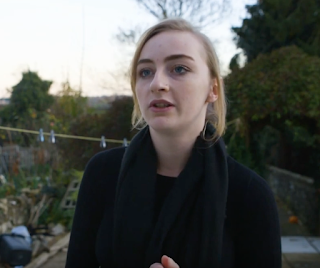
This LED also works outside to add in some detail to the face, the photo to the right is from the C100 test, here I added the YN006 in front of the subject, although it doesn't flood the face of my interviewee, it adds in some light to bring out more detail in the face and also balance out the lighting more. With this being outside, the natural light works to fill the interviewee.
My LED light works better for the outside interview due to it being battery powered so I don't need to worry about mains power.
The lighting in the Sony A7S ii test shows both the Arri 2K lights and my own 600W Red Head Tungsten lights. The photo below shows the lighting here:
I have 3 Arri 2K's facing the band and my own Red Heads behind for setting and additional lighting. As you can see from the footage, the lighting is very warm and more C.T.O (Colour temperature Orange) which would likely work fine in a theatre/club but not for the interviews in Tanya's house as it won't match the lighting. However, since we don't have the location of the performance yet I can't do the lighting for there as I'm unaware what we'll have available.
One of my main issues is that I'm not able to recce Tanya's house which is one of our main locations and so I can't see what the location is like and most importantly, I can't see how the lighting works is within the house, how much natural lighting gets into the house and what sort of lighting is within the house. Is it white, Tungsten, Coloured and does the lighting strobe or done via LED/Powered bulbs?
Jemma and Victoria contacted Tanya and asked for photos of her house so I could make an assumption on what lighting I would need to bring over to the location. I'm unable to post these photos however as Tanya has requested they not be shown.
Tanya's room has white lighting which works well as the lighting I've often used in my YN006 LED Light pointed straight onto the subject with a diffuser to soften the light. This has been suggested to be by the DOP's I've spoken to. I'd likely bring a second light to ensure the background is lit and we see the detail in the room as well.

This LED also works outside to add in some detail to the face, the photo to the right is from the C100 test, here I added the YN006 in front of the subject, although it doesn't flood the face of my interviewee, it adds in some light to bring out more detail in the face and also balance out the lighting more. With this being outside, the natural light works to fill the interviewee.
My LED light works better for the outside interview due to it being battery powered so I don't need to worry about mains power.
The lighting in the Sony A7S ii test shows both the Arri 2K lights and my own 600W Red Head Tungsten lights. The photo below shows the lighting here:
I have 3 Arri 2K's facing the band and my own Red Heads behind for setting and additional lighting. As you can see from the footage, the lighting is very warm and more C.T.O (Colour temperature Orange) which would likely work fine in a theatre/club but not for the interviews in Tanya's house as it won't match the lighting. However, since we don't have the location of the performance yet I can't do the lighting for there as I'm unaware what we'll have available.
PRE-PRODUCTION: CANON C100 TEST
 With all the issues I'd had with the camera tests I found that I really liked the look of Canon footage but I always had the issue of audio recording with the cameras. So I looked into the video cameras which Canon produce as an option. I have been fortunate enough to use the Canon C300 before which is a 4K camera, however Victoria explained that the camera is too expensive for our budget. I then looked into the Canon C100 which is a smaller model and films in Full HD. I was told by a few film students at UCA Film Production that it's a classic documentary camera due to it's size and operating.
With all the issues I'd had with the camera tests I found that I really liked the look of Canon footage but I always had the issue of audio recording with the cameras. So I looked into the video cameras which Canon produce as an option. I have been fortunate enough to use the Canon C300 before which is a 4K camera, however Victoria explained that the camera is too expensive for our budget. I then looked into the Canon C100 which is a smaller model and films in Full HD. I was told by a few film students at UCA Film Production that it's a classic documentary camera due to it's size and operating.I rented the camera for a week to test out how it is to operate. The camera is easy to get around as the menu screen is just like the Canon 60D and Canon 5D menu so I was already finding it easy to set up the camera. All the relevant settings (peaking, white balance, ISO, zebra, audio controls) are on the body which makes set up much easier as opposed to the DSLR's where I have to do into the the menu settings and change everything through there.
The lens mount for the Canon C100 is EF Mount so my own lens's, Tamron 24mm-70mm 2.8F EF and Canon 50mm 1.4F EF both work with the camera so not additional lens's need to be rented. The fact the camera can change lens's as well works for me as it allows me to change the look which I want to do with the interviews. The camera can also film both raw footage and raw C-Log footage which allows a large amount of grading to be done to the footage.
PRE-PRODUCTION: UPDATE PITCH
All groups were asked to give an update pitch to explain what's currently happening with the project and if there are any updates.
My section of the pitch I explained the research I've been doing, the change of filming style, explained the locations both confirmed and unconfirmed and then explained the camera tests that I have done so far, although at the time of this pitch I was still doing the Canon C100 Test. I then went on to show the kit list update and explained that we can't use the Canon 5D Mark 4 as a second camera due to budget. However, prior to giving this pitch, Sam Creamer did suggest testing the Panasonic DVX200 against the Canon C100 as it's a camera that's footage that could match closest.
With locations, I explained that it's confirmed that we'll be filming in Tanya's house and around her village. The location that isn't confirmed yet is the location of the performance with Tanya. Jemma really wants a classic theatre but due to budget it doesn't look like we can get one, as well, I'm not confident I could light a theatre on my own. If I had access to the theatre's lighting and control board and their technician then this would all be film. However, if not then I'll have to try and light the theatre with the lights I have available which could be difficult.
We are looking into the possibility of a club which would be easier to light as it's smaller and would be a better atmosphere. Victoria has contacted a few clubs but it will all depend on the price as our budget isn't large.
Tuesday, 4 December 2018
PRE-PRODUCTION: CANON 5D MARK 4 TEST
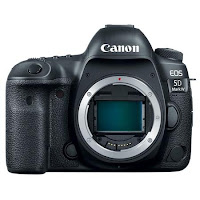 One camera which I've shot a short documentary on and really enjoyed operating was the Canon 5D Mark 4. This DSLR has an amazing look to it and I loved operating it. It has the body of my 60D so I was comfortable with it. I was operating with a 24mm-70mm 2.8F Canon lens which was a standard filming lens but also had a nice focal range. The camera can film in 4K and do video time lapse as well as having a fantastic auto-focus system with touch screen which with interviews, worked really well and helped when having to change shot quickly. Since I've already used the camera to film an entire documentary I've used a extract from one of the interviews as my test:
One camera which I've shot a short documentary on and really enjoyed operating was the Canon 5D Mark 4. This DSLR has an amazing look to it and I loved operating it. It has the body of my 60D so I was comfortable with it. I was operating with a 24mm-70mm 2.8F Canon lens which was a standard filming lens but also had a nice focal range. The camera can film in 4K and do video time lapse as well as having a fantastic auto-focus system with touch screen which with interviews, worked really well and helped when having to change shot quickly. Since I've already used the camera to film an entire documentary I've used a extract from one of the interviews as my test:
Annoyingly I couldn't get more footage from the documentary as it's currently being sent out to film festivals, but from the short test you can see first the quality of the footage (raw) is excellent and as well the change of shots in the footage was nice and smooth which was nice to be able to achieve, the focus was done through auto focus which allowed me to focus on zooming in and changing the shot. The annoying thing about this camera is that the footage is compressed and doesn't offer a huge amount of grading.
Also, the same issue with this camera as I've had with other DSLR's which is the audio input isn't able to take radio mic input which are XLR inputs.
This tends to be the case with the cameras I've tried and although I know now it's a Canon I want to go with (due to the colour quality of the footage and the look from the footage) but I need to find a camera which offers more with Audio recording.
However, I am debating using this as a second camera but an issue which has come forward is that there isn't enough money in the budget to get a second camera and potentially I would need 2 more cameras with the performance so I'll need to find a camera which we don't to pay for and can get for a full day of filming.
Also, the same issue with this camera as I've had with other DSLR's which is the audio input isn't able to take radio mic input which are XLR inputs.
This tends to be the case with the cameras I've tried and although I know now it's a Canon I want to go with (due to the colour quality of the footage and the look from the footage) but I need to find a camera which offers more with Audio recording.
However, I am debating using this as a second camera but an issue which has come forward is that there isn't enough money in the budget to get a second camera and potentially I would need 2 more cameras with the performance so I'll need to find a camera which we don't to pay for and can get for a full day of filming.
Decision: Not to use this camera
CINEMATOGRAPHY ONLINE MASTERCLASSES (DOP RESEARCH)
For more research into being a DOP for Documentaries I looked for books relevant to this. Although all the books were relevant to shooting dramas and cinematic films, not documentaries. After contacting Lee Thomas and asking for recommendations on books relating to becoming a DOP his reply was:
"Don't bother with books. You can read 100 books on cinematography and be a shit DOP. To be a Director of Photography you need hands on experience as well as knowledge but you'll get this knowledge by doing, not reading. Try watching some online videos and use what you see to get your own look, that's when you go from a camera operator to a DOP." (Lee Thomas)
With this, I went online to find some more Cinematographers who have done some online Masterclasses. I was aiming to find those who have worked on Documentaries, while looking I found a Masterclass produced by CookeOptics TV which the award winning cinematographer Mike Eley who has been the DOP for documentaries such as Marley (2012), Fire in the Night (2013) and the BAFTA Award winning documentary Touching the Void (2003):
When Mike is being asked what kit he would take on a documentary, he explains that the choice of camera depends on what he is 100% comfortable with and confident with. This is something I've found already with my research into DOP's, Sam Creamer explained to me when showing me the Black Magic Mini Ursa that it's a camera that only experienced DOP's should use and that I should go with a camera I'm confident in operating rather than something completely new. Mike says the same here and explains that the DOP needs to be confident in his operating before looking for the look of the film as this can ruin the film. He also explains that often documentary shoots only have 1 crew member so is doing everything.
Monday, 3 December 2018
RTS TALK (DOP RESEARCH)
RTS Futures put together a panel talk on Observational Documentaries which students and film makers could attend at the BBC Television Centre. Myself, Jemma and Victoria attended the panel talk. On there were documentary makers Peter Dale (Head of Documentaries at the Channel 4) and Documentary makers Havana Marking, Lizzie Kempton and Pete Beard.
Through the talk we watched small extracts from each of the film makers works, Lizzie had produced a documentary called How to Die: Simon's Choice following someone who was undergoing Euthanasia:
Pete Beard is a Director, Producer and Self shooter for documentaries and had worked on many projects. One of the main which caught my interest was Bedlam which follows individuals with mental disorders and sees them for how much they struggle through life. All of this is very fly-on-the-wall style of following the contributors but also there are times when they'll speak to the camera while moving or taking on a task. Below is episode 3, in which we saw from 32:00-36:00.
Finally there was Havana Marking who is best known for her award winning film Afghan Star which won her the Best Director and Audience Award at the 2009 Sundance Film Festival. The documentary is like a behind the scenes of the Afghan X-Factor/talent shows, below is the film, the extract we were shown was 26:00-30:00:
PRE-PRODUCTION - STRUCTURE CHANGE
Jemma and Victoria called me into a Production meeting to explain that the structure of the documentary is changing. One of the main changes is that we are no longer having the contributors from the straight community. Jemma wants the documentary to tell Tanya's story and follow her as she has the story and she should be the focus. I questioned whether or not the performance will still be happening and Jemma and Victoria explained that instead of seeing if Tanya is being accepted by regular people from different communities, we're seeing whether she can be a Drag Queen and whether well established Drag Queens would agree. From this, they want to bring in 3 experienced Drag Queens to 'judge' Tanya Drag act Miss Zodie at the end of the film.
Through the rest of the film we'll be following Tanya and leading up to her first performance in front of these Queens. Potentially interviewing her family as well. From this, I'm aware that the reveal will not be a big secret so I will need to change the idea I've had for my interview, both with Tanya and also with the straight contributors (as they're no longer in the film)
Sunday, 2 December 2018
PRE-PRODUCTION: SONY A7S ii TEST
 The next camera I tested was the Sony A7S ii. This is a camera I've been using a lot lately for personal projects and so I decided to kill two birds with one stone and use these as my tests for filming the documentary.
The next camera I tested was the Sony A7S ii. This is a camera I've been using a lot lately for personal projects and so I decided to kill two birds with one stone and use these as my tests for filming the documentary.First test I did was another interview for the Behind the Scenes of Last Night which was with Ru Gilfillan who was the third character in the film. This interview was done in a small corner of a office which had no relevance and didn't look very pleasing either so to add drama for this interview (as Jon Stapleton told me) I threw on my 50mm Prime lens to blur out the background. This helped as Ru's character has the biggest twist of the film and his character literally snaps with angry towards the end and how intense it's played made me want to add in drama to the interview. Annoyingly, the camera didn't agree with the lighting, from the screen shot below you can see black lines across the footage which is due to the lighting at the location (I believe). These move up and down the footage, although slowly and can be hidden with cut aways and archive footage and could potentially be fixed in post, it didn't put me in huge amounts of confidence with the camera.
Below is all the camera tests with the Sony A7S ii:
RUN Footage
All the night footage is from my short film RUN (currently in Production), this shows how good the camera holds up in Low light, the quality of the footage is brilliant and even with the ISO at 800 you're getting clear quality and no noise. As well as this, the camera is nice to operate with the shoulder rig as it's so light weight. Easy to get nice and stable footage even on a rig instead of using a stabiliser. There are only 4 LED lights being used on this shoot and the camera is bringing out all the detail both foreground and background.
Harry Evans - Tinfoil Arms footage
As I have to film a performance with the the chosen camera, I took the opportunity to film a music video with this camera. The video was a basic performance video covering the entire band, the clip I've put in the test video is just an extract as the footage is mostly the same just different band members. The lighting is C.T.O (Colour Temperature Orange) with 3 Red Head tungsten lights behind the band to add to the set. Annoyingly, with the location of the performance still unconfirmed I'm unable to test the cameras with lighting for a theatre/club so I used this as an alternative. My main practice here was with the rig. Which from the footage can see it's nice to operate, the follow focus works nicely and the weight isn't too much either.
The issue with this camera is the same with Canon 60D and Canon 5D in that audio has to be recorded separately as a microphone can't be attached to the camera. This normally wouldn't be an issue but as it looks like we won't be having a sound operator I'll need a camera where I can have the sound being recorded into the camera both for actuality and interviews. As well, the black bars on the interview footage have made me sceptical about using this camera as the main one.
Decision: Not to use this camera
Subscribe to:
Comments (Atom)

























